Faucets form an essential detail when it comes to designing spaces like kitchens and bathrooms. Choosing a particular type of faucet depends on many factors like: function, aesthetics, usage, type of setting etc. There are numerous types of faucets available based on ones needs but identifying the most efficient and fit choice suiting ones requirements is very important.
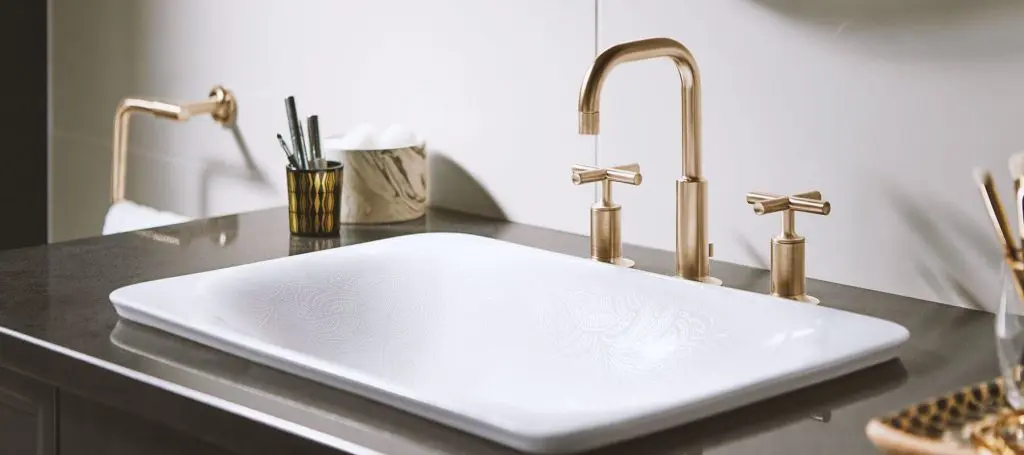
Faucets are elements that are under frequent usage every day. Hence, it is very important to choose one wisely to avoid persistent repairs and maintenance in the future. Here is a simple guide that explains you the types of faucets, their efficiency, materiality, adaptability and the setting they are best suited for.
Faucets for homes are categorised in four broad typologies:
- Ball
- Disc
- Cartridge
- Compression
The first three (ball, disc, cartridge) are all types of “washerless faucets” since they do not use rubber or neoprene washers. Whereas the compression faucet is a basic washer faucet.
1. Ball faucet

Usage: Kitchen Sinks and basins
As the name implies, ball faucet utilises the principle of ball joint to control the flow of hot and cold water lines, and mix them as per requirements. These have extremely simple working mechanism; they are controlled by a single handle on a spherical or rounded cap that is mounted directly on top of the spout.
The primary component of this type of faucet is the steel ball that contains a network of grooves and holes. These grooves and holes align with the hot and cold water inlets. The horizontal linear movement of the handle is to adjust the water pressure and the vertical linear movement is to change the temperature of water.
Ball faucets are very common in kitchen sinks and wash basins that are under active usage as they are washerless faucets are efficient in areas with higher usage. The downside of ball faucet is their relative complexity. They are composed of numerous small and intricate parts. O-rings and washers.
Leaks develop over time as the parts start to wear out due to frequent usage. Additionally, mineral deposits and tiny debris in water can cause problem inside the faucet, which may require cleaning or replacement of affected components.
2. Disk faucet
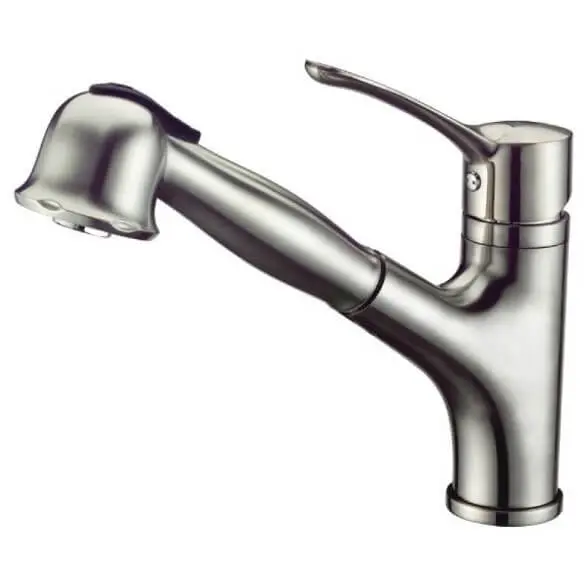
Usage: Bathroom Sinks, Common Sinks
Ceramic disk faucets are a recent innovation in the modern faucet technology. They are easily identifiable with their single levered handle over a wide cylindrical disk-like body. The mechanism in this type of faucet is a little different, the disk faucet mixes hot and cold water inside a mixing chamber called pressure balance cartridge. Two ceramic disks at the bottom of the chamber will raise and lower to control the rate of flow of water. The temperature in this type is controlled by the side-to-side rotation of the handle.
These faucets are high quality, very reliable and do not need repair very often.
3. Cartage Faucet (Two Handles)
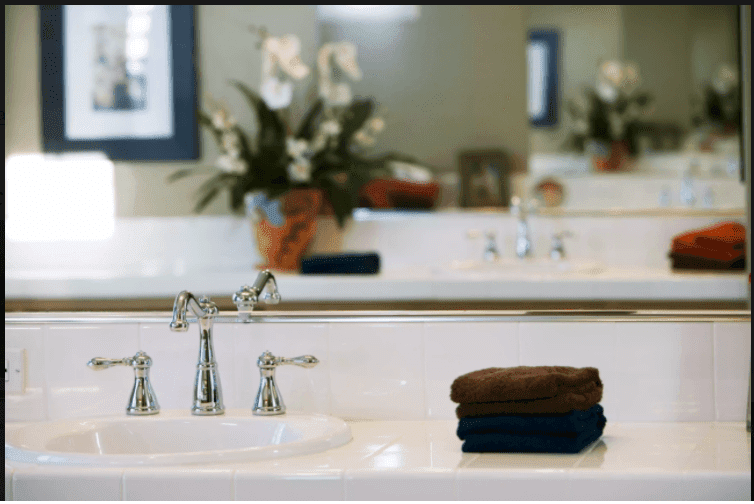
Usage: Preferably for Bathroom sinks
Cartridge faucets are always two-handled and are most commonly used in bathrooms. These are a little tricky to identify but their motion makes it easier: if the handle moves up and down as you twist it to turn the water on and off, you are using cartridge faucet. These use a cartridge that moves up and down to control the flow of water.
The more the cartridge raises, the more the water flows into the mixing chamber and gradually the pressure of water coming out from the faucet also increases. Mixing of hot and cold water can be tricky as both the valves have to be turned on in different ratios in order to get a desired temperature of water.
The advantage that cartridge valves hold over ball valves is their configuration. Cartridge valves can be used in a single handle configuration like ball valve faucets, or they may be paired inside two-handled faucets. Additionally, cartridge valve faucets are designed for simpler and easier replacement as they contain fewer parts.
4. Compression Washer faucet
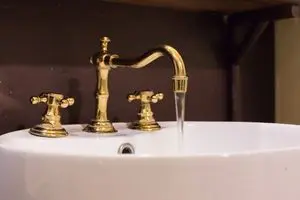
Usage: Utility Sinks, Independent sinks, Bathroom Sinks
Compression faucets are one of the oldest known and evolved faucets. They are often found in old homes and even newer homes in an updated and evolved manner. Nowadays, they are most commonly used utility sinks. These faucets are the least expensive but are most prone to leaks, repairs and ceaseless maintenance.
Compression faucets are identifiable by their separate hot and cold water handles and their action requiring one to tighten these handles to shut the water flow from the main central faucet. Compression faucets use rubber washers to form a tight seal that stops the flow of water.
Additional Choices for Bathroom and Kitchen Faucets
1. Center-Set Faucet
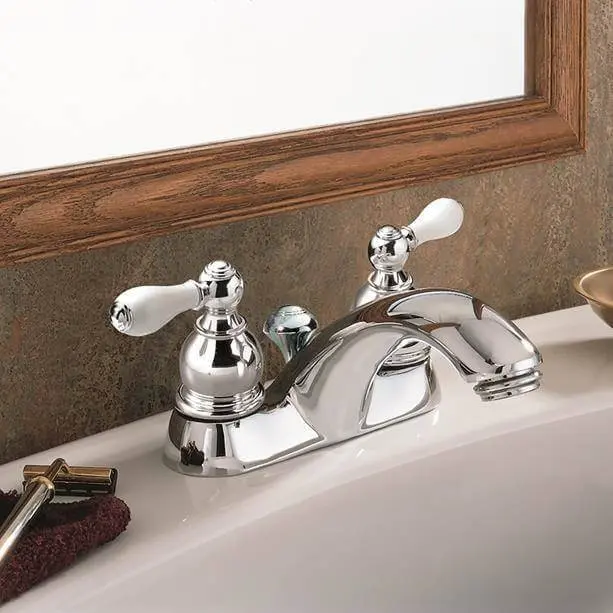
Usage: Bathroom Sinks
The built-in bathroom faucet can be used with a three-hole sink. The handles of Centre-set bathroom faucets are four inches apart. These faucets include a water outlet and two handles, one on each side of the base.
However, some central faucets have two handles mounted on the 6-inch plate of the bathroom sink. Usually the spout is short, which is a great option if you live in a congested city and don’t have enough space.
2. Bridge Faucet

Usage: Kitchen sinks, Bathroom Sinks
If you want to combine the old style with the current technology, the bridge faucet may be for you. The “bridge” means that the lever and the faucet branch into one part. This requires two holes in the bathroom or kitchen counter instead of three. You can often find bridge faucets with an under-counter sink.
This combination gives you the freedom to try the sink faucet in different ways. The bridge faucet is usually installed on the bathroom countertop, which also makes it easier to clean around the faucet, thereby keeping the bathroom sink clean and hygienic.
3. Wall Mounted Faucet
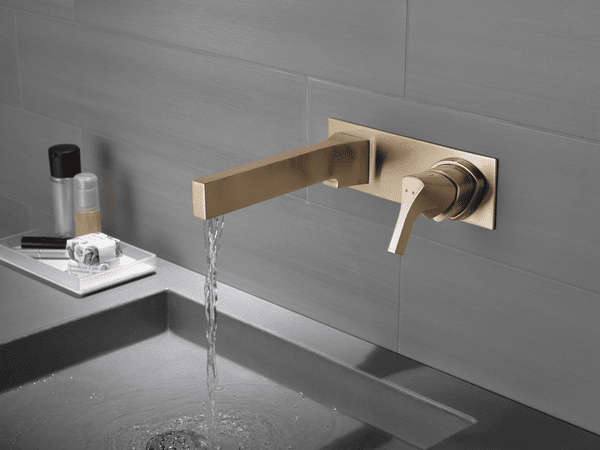
Usage: Preferably Bathroom and utility Sinks, Bathtubs
Wall-mounted faucets are installed on the wall, not the sink or countertop, like countertop faucets or faucets. These faucets extend above the sink and are available in a variety of styles, sizes, colours, and finishes. Many people choose wall-mounted fixtures because of their clean appearance; this is a modern and practical style.
The main advantage of installing a wall-mounted faucet in the sink is that it makes it easy to keep the area around the sink clean. Since dirt and calcium deposits tend to accumulate on the back of the sink, it is a critical area for cleaning. If there is no faucet or hardware, it is definitely easier to reach.
4. Deck Mount Faucet
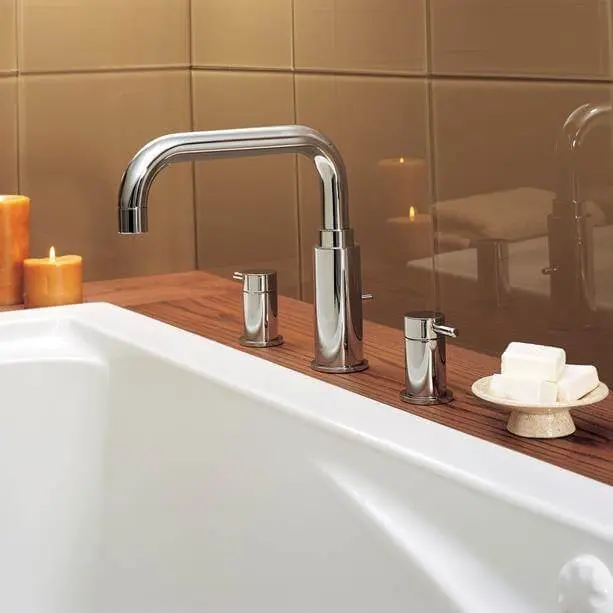
Usage: Kitchen Sinks, Independent sinks, Bathroom Sinks and bathtubs
Countertop installation means that the faucet is installed directly on the countertop, rather than the wall or the sink. You can often see countertop mounted faucets in bathtubs and kitchen countertops. There are many ways to install this type and it is easier to install and maintain.
The water pipe can be repaired under the sink, and the faucet and its accessories are also easily accessible from the sink. Countertop installation is usually the only option for island sinks and bar sink faucets, because there is usually no wall behind them.
Some countertop mounted faucets place the whole cover (table top) on the back of the sink edge or on top of the edge. You will see this style with a drop sink.
5. Free Standing Tub Faucet

Usage: Bathtubs, Bathroom countertops and sinks
Many people combine this faucet with types of freestanding bathtubs, sinks and countertops. You can also find this type of faucet in an eclectic shower. This tap is fixed directly to the ground. You can contribute to many different styles, including old-fashioned and industrial styles. This is because the exterior includes exposed pipes, so keep this in mind when making your choice.
The separate tap water outlet can be hung over the bathtub and filled with water from above, or it can be connected directly to the bathtub through a pre-drilled hole. Before choosing this faucet, make sure you can touch the water line under the floor. You may also need a water supply line.
– Janvi Mangukiya





